Explore the grandeur of India’s historic havelis, showcasing intricate architecture, rich history, and timeless elegance of royal residences.
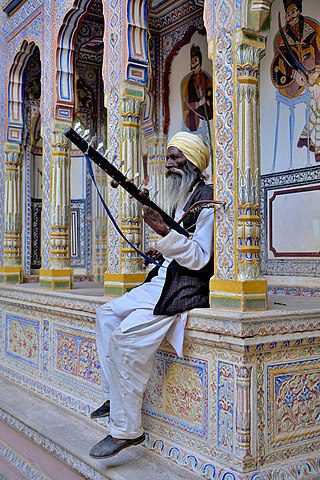
Traditional havelis in India celebrated for their intricate architecture and rich history, have been meticulously restored to provide unique and immersive experiences. These experiences include authentic regional cuisine, cultural activities, and luxurious accommodations in settings adorned with antique furniture, traditional textiles, and vibrant frescoes.
These Havelis are not merely architectural marvels; they are living museums that encapsulate their regions’ rich heritage, intricate artistry, and historical lineage. This in-depth exploration delves into the architectural brilliance, historical significance, art and painting restoration efforts, and the unique experiences offered by the restored havelis of Delhi, Rajasthan and Gujarat.
Havelis: Gateways to India’s Architectural and Cultural Heritage
The term “haveli” originates from the Arabic word “hawali,” meaning “partition” or “private space.” The concept of havelis gained prominence during the Mughal era, serving as residences for the ruling class and becoming integral to urban environments. However, the idea of multistory homes with courtyards in the Indian subcontinent dates back to as early as 3300 BCE, evident in early examples found in traditional houses and farmhouses.
Over time, Havelis evolved to incorporate local traditions and Islamic architectural styles, resulting in a distinctively Indian blend. The courtyard, a common feature in traditional Indian homes, is a key element in havelis, serving as a central gathering space and a means of ventilation in the region’s hot and dry climates.
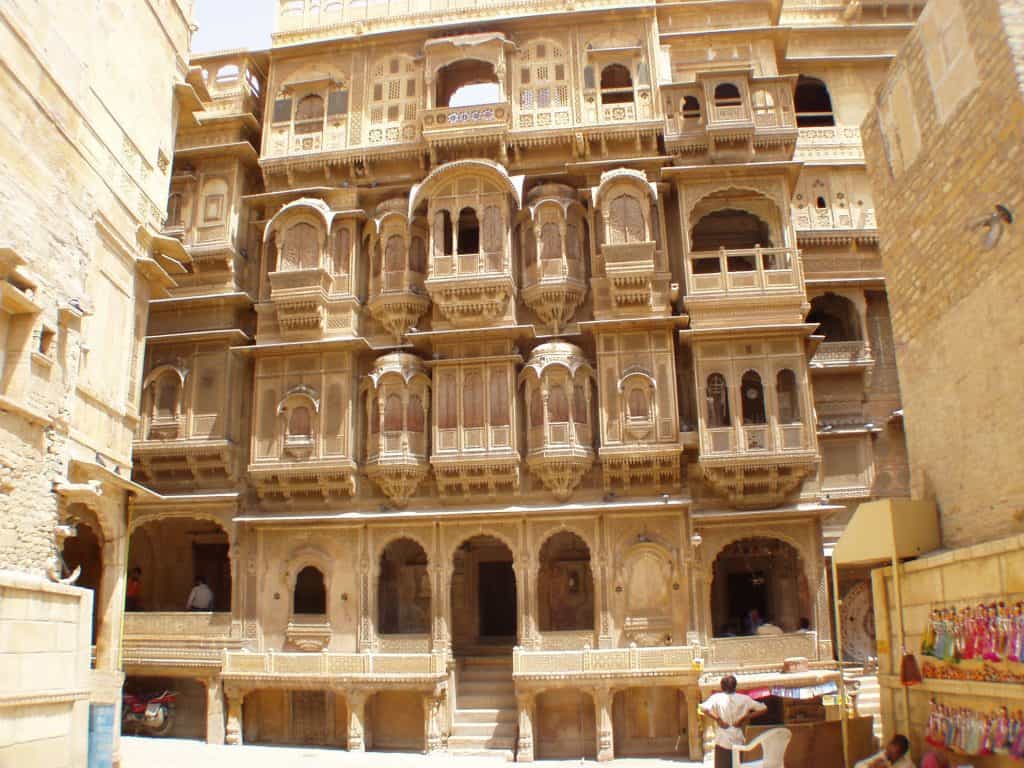
Traditionally, Havelis were grand mansions built by wealthy merchants, aristocrats, and nobility. These structures are characterized by their intricate facades, expansive courtyards, and lavish interiors, reflecting a unique blend of local architectural styles influenced by Mughal, Rajput, and European designs.
Havelis stand as living repositories of history, art, and culture. These architectural marvels, predominantly found in the northern regions of the country, have stood the test of time, serving as witnesses to the nation’s rich heritage. From the intricate carvings adorning their facades to the vibrant frescoes decorating their walls, havelis offer a unique glimpse into the lives and times of their former inhabitants.
Experiencing the Haveli Culture
Visiting a haveli is not just about admiring its architectural beauty; it is also about immersing oneself in the region’s rich cultural heritage. Many havelis have been converted into hotels, offering visitors a chance to experience the grandeur of the past while enjoying modern amenities. These haveli hotels often feature traditional cuisine, showcasing the culinary delights of the region. Guests can also participate in cultural activities such as pottery making, weaving, and block printing, gaining a deeper understanding of local artisanal traditions.
In addition to staying in a haveli hotel, visitors can explore the surrounding areas and experience the vibrant local culture. In Shekhawati, for instance, one can visit the numerous havelis scattered throughout the towns and villages, marvelling at the intricate frescoes and learning about the region’s history.
Similarly, in Old Delhi, visitors can explore the winding streets of the Walled City, visit local markets, try street food, and experience the bustling energy of the city. The restored havelis in the area offer a chance to step back in time and appreciate the city’s cultural richness.
Preserving the Legacy of Havelis
As time passes, many Havelis have fallen into disrepair, with owners unable to afford the cost of upkeep and restoration. However, several initiatives are underway to preserve these architectural gems for future generations. One such initiative is “The Shekhawati Project,” which aims to conserve and restore the structures and fresco paintings of the region’s havelis. This project has helped revive interest in these cultural icons, encouraging owners to take pride in their ancestral homes.
Similarly, in Old Delhi, the restoration of havelis has led to the creation of vibrant cultural spaces that celebrate the city’s heritage. These restored Havelis serve not only as performance venues but also as museums that showcase the history and culture of Delhi through art, crafts, and everyday objects.
The restoration of havelis is a meticulous process that involves preserving their architectural integrity and reviving the original artistry. Many have fallen into disrepair over the years, and their restoration requires a deep understanding of traditional construction techniques, materials, and artistic styles.
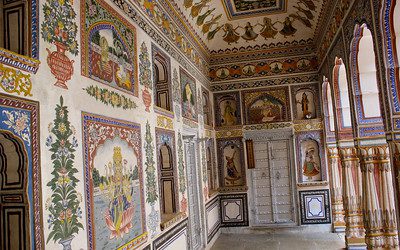
The frescoes and murals that adorn the walls of havelis are an integral part of their charm. These artworks are often created using natural pigments and depict a variety of themes, from religious stories to historical events and daily life.
Restoring these frescoes involves cleaning, stabilizing, and retouching the artwork to preserve its original beauty. In some cases, layers of paint need to be carefully removed to reveal the original frescoes underneath. This painstaking process requires skilled artisans and conservationists who are well-versed in traditional painting techniques.
Restoring the architectural elements of havelis, such as jharokhas, chhatris, and jaalis, involves using traditional materials and techniques. Skilled craftsmen work to replicate the intricate carvings and designs, ensuring that the restored elements blend seamlessly with the original structure.
The use of lime plaster, natural pigments, and traditional woodworking techniques is essential in maintaining the authenticity of the restoration. In some cases, original elements are carefully dismantled, restored, and reassembled to preserve their integrity.
Havelis as Heritage Hotels
The transformation of Havelis into heritage hotels has breathed new life into these historical structures, allowing them to be preserved and enjoyed by future generations. These heritage hotels offer a unique blend of historical charm and modern luxury, providing guests with an immersive experience of India’s rich cultural heritage.
Heritage Haveli hotels offer luxurious accommodations that reflect the grandeur of their historical past. The rooms are often adorned with antique furniture, intricate woodwork, and traditional textiles, creating an ambience of regal opulence.
For example, the 175-year-old Samode Haveli in Jaipur offers a royal experience with its beautifully restored rooms and suites. The interiors are adorned with antique furniture, rich mosaics, painted arches, frescoes, mirror work, and traditional Rajasthani decor, providing guests with a taste of royal living. One of its unique features is the elephant ramp, adding to its historical charm. The haveli offers modern amenities, including an outdoor swimming pool and a spa and wellness centre.
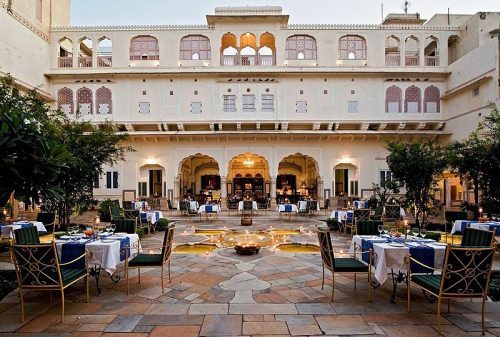
The culinary offerings at heritage Haveli hotels are an integral part of the guest experience. Many of these hotels feature traditional kitchens that serve authentic regional cuisine, prepared using age-old recipes and techniques.
At the RAAS Devi Garh in Udaipur, guests can enjoy a fine dining experience that blends traditional Rajasthani flavours with contemporary culinary techniques. The hotel also offers cooking classes, allowing guests to learn the secrets of Rajasthani cuisine.
The on-site restaurant, Lakhori, at Dharampura Haveli Delhi features a seven-course tasting menu that changes weekly. This menu offers a delectable fusion of Chandni Chowk street food and modern Mughlai cuisine.
The Samode Haveli Jaipur restaurant, decorated with vibrant hand-painted murals, serves a delightful array of local and international cuisines, providing a feast for both the eyes and the palate.
Heritage Haveli hotels often organize cultural activities and experiences that allow guests to immerse themselves in the local culture. These may include traditional music and dance performances, guided heritage walks, and craft workshops.
The Ajit Bhawan in Jodhpur offers a range of cultural activities, including folk music performances, camel rides, and village tours. Guests can also explore the nearby Mehrangarh Fort and Umaid Bhawan Palace, further enriching their cultural experience.
As a testament to its rich historical traditions, Haveli Dharampura Delhi hosts weekly kathak dance and classical music performances featuring artists from Delhi’s renowned musical gharanas in the 200-year-old haveli’s courtyard.
Rajasthan: The Land of Majestic Havelis
In Rajasthan, Havelis are often synonymous with opulence and grandeur. The region’s arid climate and desert landscape influenced the construction techniques and architectural styles. Built primarily from locally sourced sandstone and marble, Rajasthani havelis are adorned with elaborate jharokhas (overhanging enclosed balconies), chhatris (elevated, dome-shaped pavilions), and intricate stone carvings.
The Architectural Marvels of Shekhawati
One of the most famous regions for havelis is Shekhawati, located in the northeastern part of Rajasthan. Known as the “largest open-air art gallery in India,” Shekhawati boasts a stunning collection of havelis adorned with intricate frescoes. Commissioned by wealthy Marwari merchants between 1830 and 1930, these Havelis were heavily influenced by Mughal architecture.
Shekhawati havelis were designed to be closed off from the outside world, with a single large main gate serving as the entrance. Typically, these havelis incorporated two courtyards: an outer one for men, serving as an extended threshold, and an inner one, the domain of women.
The largest havelis could have up to three or four courtyards and were two to three stories high. The frescoes adorning the walls of Shekhawati havelis are a testament to the artistic prowess of the region’s painters, depicting a wide range of subjects, from religious motifs to scenes of everyday life, historical events, and technological advancements.
The Havelis of Jaisalmer
Jaisalmer, a city in Rajasthan known for its stunning Golden Fort, is also home to some of the most impressive havelis in the country. Three havelis, in particular, stand out: Patwon Ki Haveli, Salim Singh Ki Haveli, and Nathmal-Ki Haveli. These elaborate homes, once owned by wealthy merchants, feature ostentatious carvings and intricate designs that showcase the region’s architectural prowess.
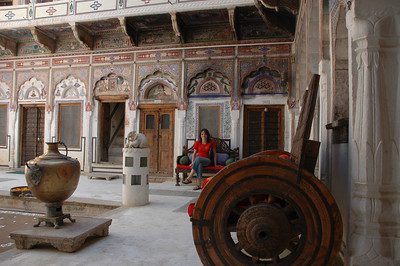
The havelis of Jaisalmer are not only architectural marvels but also serve as testaments to the city’s rich cultural heritage. Many of these havelis have been converted into hotels, offering visitors a chance to experience the grandeur of the past while enjoying modern amenities.
One of the most famous havelis in Rajasthan is the Patwon Ki Haveli in Jaisalmer. Constructed in the early 19th century by a wealthy merchant, Guman Chand Patwa, this haveli is a cluster of five intricately designed houses. The facade of Patwon Ki Haveli is a masterpiece of craftsmanship, with detailed carvings and elaborate murals. The interiors boast mirror work, intricate wood carvings, and vibrant frescoes depicting Rajasthani culture.
Another notable example is the Nathmal Ki Haveli, also in Jaisalmer. Built by two architect brothers, this haveli is renowned for its symmetrical architecture and exquisite carvings. The exterior features a blend of Rajput and Islamic architectural styles, with a facade adorned with carvings of flowers, birds, elephants, and soldiers.
Gujarat: A Blend of Cultures
Gujarat’s Havelis, particularly in the regions of Kutch and Saurashtra, reflect a unique amalgamation of architectural influences from Hindu, Islamic, and European styles. The state’s prosperous trading history is evident in the grandeur and design of its havelis, which were often built by wealthy traders and merchants.
The Vijay Vilas Palace in Mandvi, Kutch, is a splendid example of the architectural elegance of Gujarati havelis. Built in the 1920s by Maharao Shri Khengarji III, the palace features a blend of colonial, Mughal, and Victorian architectural styles. The intricately carved stone jaalis (lattice screens), expansive courtyards, and ornate interiors reflect the craftsmanship and opulence of the era.
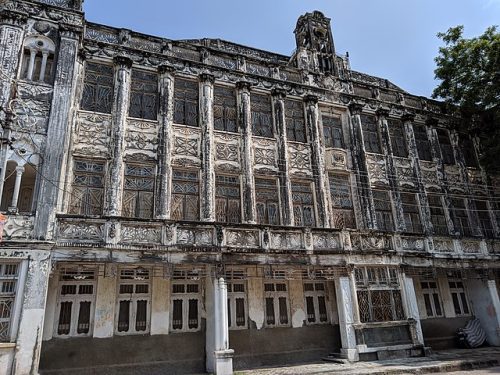
In Ahmedabad, the Sidhpur havelis stand as a testament to the region’s rich architectural heritage. Known as the ‘Bohravad,’ these havelis were built by the affluent Bohra Muslim community. The facades of these havelis are adorned with intricate woodwork, stucco decorations, and stained glass windows, showcasing a blend of European and Indian architectural styles.
Historical Lineage
The historical lineage of havelis is deeply intertwined with the socio-economic and cultural fabric of their regions. These grand mansions were not just residences but also symbols of power, wealth, and prestige, significantly aligned with the nobility of the time.
In Rajasthan, Havelis were predominantly built by the princes and families of royal lineage as well as wealthy merchant families known as Marwaris. These merchants amassed great wealth through trade and commerce, particularly during the Mughal era and the British colonial period. The Havelis served as a testament to their prosperity and social status.
The Shekhawati region in Rajasthan is particularly renowned for its havelis, often referred to as ‘open-air art galleries.’ The towns of Mandawa, Nawalgarh, and Fatehpur boast numerous havelis adorned with intricate frescoes and murals. These frescoes depict a wide range of themes, from mythological stories and folklore to scenes from daily life and European influences.
In Gujarat, the historical lineage of havelis is closely linked to the state’s noble and princely families as well as prosperous trading communities. The Jain merchants of Patan, the Bohra Muslim traders of Sidhpur, and the wealthy Hindu traders of Ahmedabad were instrumental in building these grand mansions.
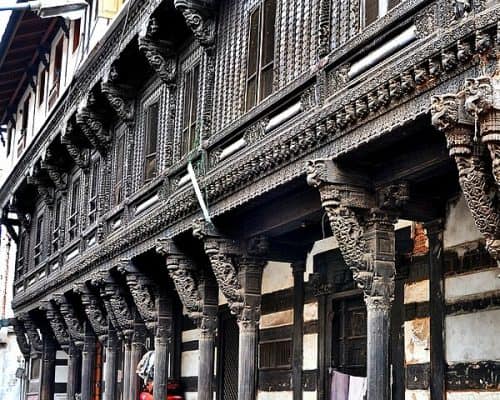
The Haveli of Rani Sipri in Ahmedabad, built in the 16th century, is a notable example of a merchant haveli. This haveli was commissioned by Rani Sipri, the wife of a wealthy merchant, and showcases a blend of Hindu and Islamic architectural styles. The intricate stone carvings and detailed jalis reflect the artistic excellence of the period.
Heritage Havelis and their rich cultural legacy
Havelis are not just buildings but living, breathing testaments to India’s rich architectural and cultural heritage. From the architectural marvels of Ahmedabad, the serene retreats of Udaipur, and the grand mansions of Shekhawati to the historic havelis of Old Delhi, these architectural marvels offer a glimpse into the lives and times of their former inhabitants.
As we move forward in the 21st century, preserving these cultural icons for future generations is crucial. Through initiatives like “The Shekhawati Project” and the restoration of havelis in Old Delhi, we can ensure that the legacy of havelis lives on, inspiring and educating visitors worldwide.
Read more: Latest



